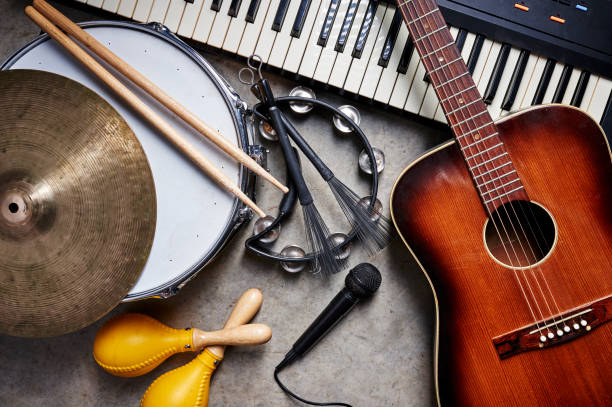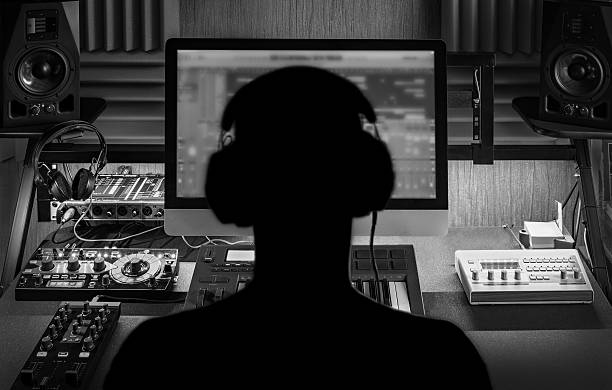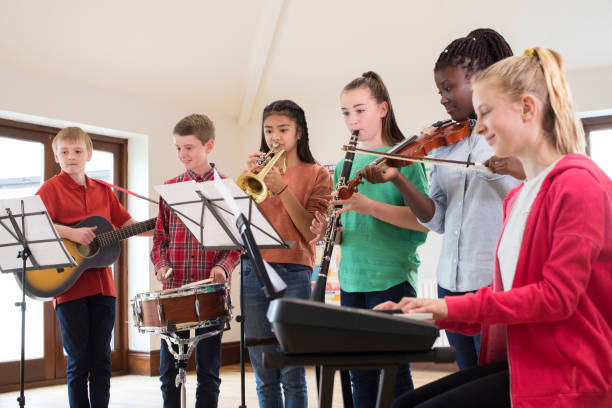Music is a form of artistic expression that combines sounds, rhythms, melodies, and harmonies to create a meaningful and emotional experience. It is a universal language that transcends cultural boundaries and has been an integral part of human culture for centuries. Here are some key aspects related to music:

RATIONALE OF MUSIC
- Emotional Expression: Music is a potent tool for expressing emotions. It may elicit and express a variety of feelings, such as happiness, grief, enthusiasm, love, and nostalgia. People may express and process their emotions through music, which facilitates catharsis and connections with others who share similar emotions.
- Music acts as a global language that cuts beyond social, linguistic, and cultural barriers to promote communication and connection.
- Music is a key component in preserving and expressing cultural identity and tradition, according to research.
- Music is a sort of entertainment that enhances people’s lives by providing pleasure and satisfaction.
- Music has a beneficial effect on brain function and cognitive growth. According to research, listening to music can improve one’s memory, concentration, problem-solving ability, and spatial-temporal capabilities. I
- Individuals can experience the therapeutic and restorative benefits of music.
- Music is valued for its aesthetic aspects, such as its beauty, complexity, and craftsmanship.
- Music plays a big part in social interactions and rituals, as well as other things. People may come together via music, strengthen their social connections, and share experiences.
- Music has a positive economic impact by creating jobs and stimulating economic growth. The music industry is made up of a number of segments, including production, distribution, marketing, recording, and live performance.
The following are elements of Music:
-
- A series of notes performed consecutively that create a recognizable and memorable song is referred to as a melody.
- Harmony is the simultaneous playing of a number of notes or chords that support the melody and provide a full, appealing sound.
- Rhythm is the arrangement of beats and accents in music that gives the groove and impression of motion. It gives the song its pacing and structure.
- Dynamics: The range of loudness and intensity in a piece of music, from mild (piano) to loud (forte) and everything in between, is referred to as dynamics.
- Timbre: Also referred to as tone color, timbre refers to the characteristics of a sound that set one instrument or voice apart from another.
Musical genres classify music based on shared traits, aesthetics, and influences from many cultures. There are many different genres, like as classical, jazz, rock, pop, hip-hop, country, electronic, and many others. Each genre has a distinctive tone, set of instruments, and cultural setting.
For Music to be of high quality, human beings have gradually developed musical instruments.

They are used to produce sound and play music. They can be classified into categories such as:
- strings (guitar, violin)
- woodwinds (flute, saxophone)
- brass (trumpet, trombone)
- percussion (drums, xylophone)
- keyboards (piano, synthesizer)
Each instrument has its own distinctive sound and technique of playing.
Apart from the musical instruments music has other aspects such as:
- Songwriting
Songwriting involves the creation of lyrics, melodies, and harmonies to craft a complete song. It requires creativity, storytelling skills, and an understanding of musical structure.
- Performance and Interpretation:
Music is often performed live or recorded for listening. Musicians bring life to the music through their interpretation, expression, and technical skill. Live performances can range from solo acts to large ensembles or orchestras, creating a unique and engaging experience for the audience.
- Recording and Production:
Music can be recorded and produced in professional studios or home setups. Recording involves capturing the performance and sound using microphones and other audio equipment. The production process includes mixing, editing, and mastering to refine the recorded tracks and create a polished final product.

Music as a Career
Music offers various career paths, including performing as a musician, composing and arranging music, music production and engineering, teaching music, working in the music industry, and more. Building a successful career in music often requires dedication, practice, networking, and continuous learning.
Music can be a fulfilling and rewarding career for those who are passionate about it.
The following are some of the factors to consider when choosing music as a career:
- Performance Experience
- Business and Marketing Skills
- Persistence
- Make a song with a melodic flow that is both catchy and memorable. To produce a sense of harmony and beauty, try out various note combinations and intervals. Utilize harmonies to enhance the melody and provide a full, pleasant sound. Try out chord structures and musical progressions that give the work a feeling of closure and tension while also adding depth and warmth.
- Create a rhythmic framework that is interesting and simple to follow. To evoke a sense of motion and energy in the music, take into account the speed, groove, and syncopation. Pay attention to loudness fluctuations and dynamics. To enhance emotional depth and generate a dynamic range that keeps the listener interested, use progressive shifts in loudness and softness.
- Pick the appropriate set of instruments.
- Add sincere expression and emotion to your song. No matter what feeling you want to evoke—joy, melancholy, or any other—connect with the music’s core and transmit it.
Starting your journey in music can be an exciting and fulfilling endeavor. The following are some aspects to consider as you start music.
- Determine Your Musical Interests
Think about the kind of music that most interests you. Do you like to sing, play an instrument, compose music, or produce music? Finding your hobbies can help you decide on the best course of action.
- Choose a Musical Instrument or a Vocal Technique
If you’re interested in playing an instrument, do your research and pick one you like. Think about enrolling in courses with a knowledgeable teacher or using online tutorials and tools. If you enjoy singing, seek out a vocal trainer or join a chorus to get advice and hone your vocal skills.

- The Fundamentals
Learn the fundamentals of music theory, such as how to recognize notes, scales, chords, rhythm, and melody. This information will provide you a firm basis for your musical endeavors.
- Regular Practice
Set aside time to continuously practice. Set aside time each day or each week for dedicated practice periods, concentrating on your instrument or vocal exercises. Regular practice enhances expertise by improving technique, muscle memory, and overall performance.
- Join a Music Class or Workshop
To develop your talents and connect with like-minded people, think about signing up for music classes or workshops. These could include seminars for songwriting, ensemble playing, or group instruction. Working together with others may stimulate creativity and offer worthwhile learning opportunities.

- Record Your Music
Consider recording your music while embracing technology. To record your performances or compositions, you may either make an investment in recording equipment or use applications and recording software. By recording, you may evaluate your development, distribute your music, and build a portfolio.
